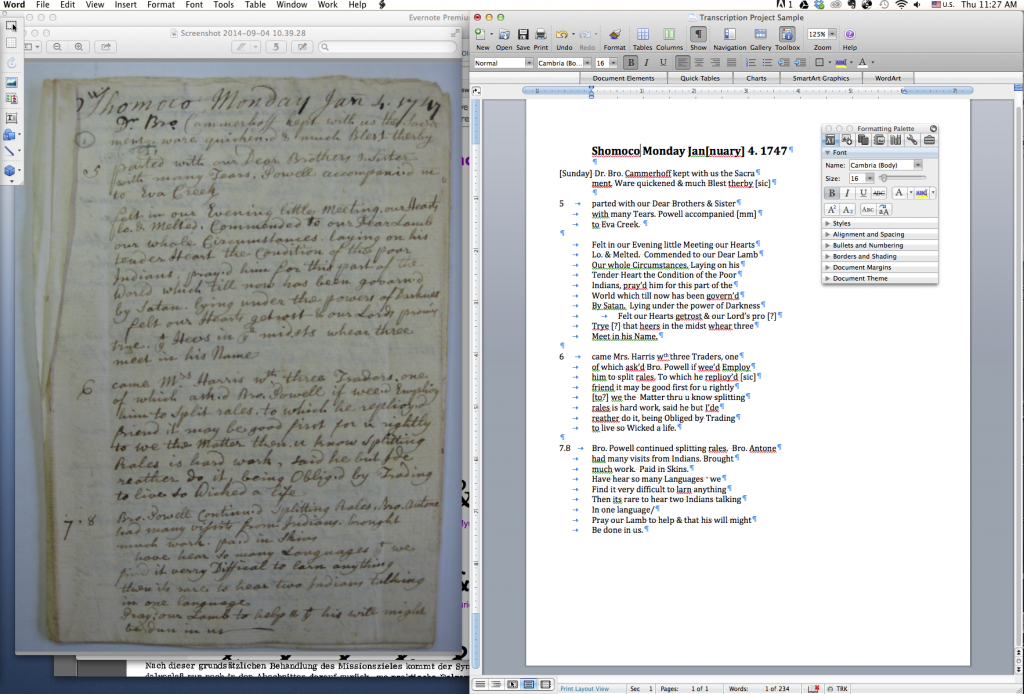How do you move from archive to digital artifact?
Traditionally the process starts in the archive when you find a document that catches your eye. It’s interesting, it sheds new light on an issue in history, and it’s the only copy in the world!!
You have to decide what to do with that document. Nowadays we’re able to use digital cameras in the archive to take a photograph of the pages that we are interested in. As you are taking digital photographs, you have to remember what they are of, what their call number is. And so I normally keep an archive log.
Once you get back to a computer which has a nice big screen and great resolution then you can start transcribing the documents. You can do this in two ways. One is to have the image open on an iPad (or a second screen) next to the computer you are writing on. Or, if you have a big screen, you can have two windows open; one of the image of the document on the other then a window open with TextEdit in Mac or NotePad in a PC. Remember, if you need to adjust the digital image to help with ease of reading, there are simple tools in Preview that will allow you to do this (go to Tools, adjust color, and then there are range of changes that you can make).
In the beginning it’s best to keep the line length of the original; that way if there are words you don’t understand you need to go back to it’s easy to find. If you want you can number the lines or we could just keep them parallel to the line from the original text.
Remember Dr. Peucker’s advice! You can scan the sentence first for general recognition but transcribe letter for letter. You will not be able to read everything the first time around! Leave the problem letters or words for the next time and move on. We will collaborate on transcription next week. If you can’t recognize something, the chances are that someone else in the class will see it first time.
Remember to follow the Bucknell Transcription Conventions!! And also remember, you are transcribing not translating into modern English. Therefore you will type what you see and not “correct” spelling or grammar!
Abbreviations
In these 18th century documents. you will find a lot of this:
Omission of ‘m’ or ‘n’.
This is represented by a dash or wavy line written over the preceding vowel. The context will make it clear whether it is an ‘m’ or ‘n’.
demād- demand
Omission of ‘i’.
This is represented by a dash or wavy line over the following ‘o’.
commissōn – Commission
Superscript letters
wt – with
wch – which
Mr – Master (not ‘Mister’ at this time).
Use of the Old English ‘th’ letter, called a thorn, which looks like a ‘y’
e – ‘The’. Note that this is pronounced exactly like ‘the’ in modern speech. It is not pronounced ‘Ye’, as in ‘Yes’. Any modern café calling itself ‘Ye olde tea shoppe’ is actually perpetuating the Old English ‘th’ symbol.
When completing these exercises transcribe y e as the and y t as th[a]t.
(Taken from very useful guidelines on abbreviations http://www.nationalarchives.gov.uk/palaeography/)
